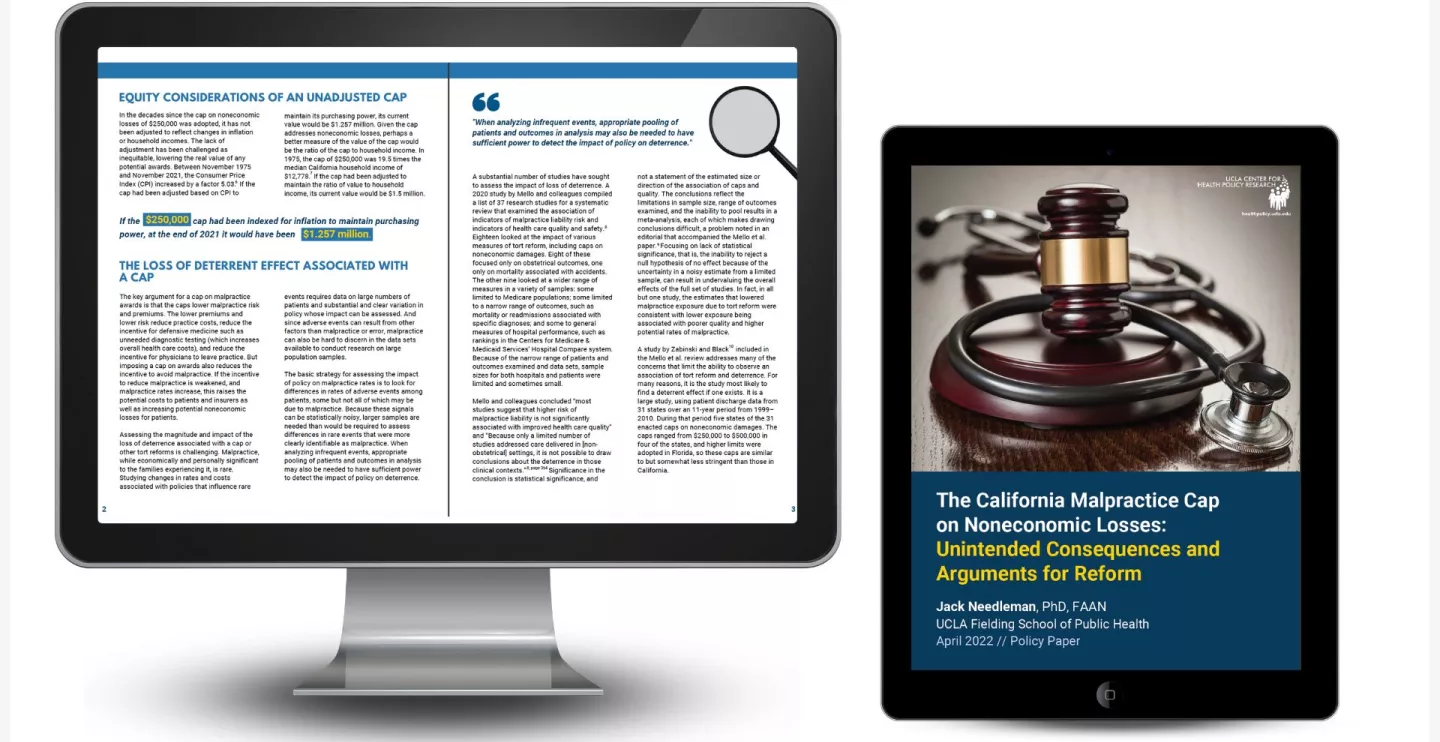Publications Menu
Summary: In 1975, a cap of $250,000 was adopted by California on noneconomic losses in malpractice cases. It was imposed in a time of perceived crisis, when state legislators and others believed rising malpractice premiums and risk of lawsuit would encourage physicians to retire from practicing medicine and would raise overall medical costs through defensive medicine.
Findings: Since the adoption of the cap, two arguments have been put forward as reasons to revise or eliminate it: The first is that the lack of adjustment to reflect inflation or the growth of household incomes is inequitable, because it lowers the real value of the reward — which in current dollars, could be as much as $1.5 million; the second is that the cap, by lowering the risk of suit for malpractice, also weakens the deterrent effect of risk of suit on physician efforts to avoid malpractice. The best available research suggests imposing caps is associated with a 16% increase in adverse events, and several approaches to applying this to California data are suggested or implemented. The estimated additional costs due to loss of deterrence are a significant offset to the potential costs of higher and more frequent claims were the cap to be eliminated or raised to reflect inflation.
Read the Publications:













